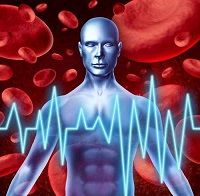Stroke: Electronic Stimulation Helps Rehab
Transcranial stimulation appears to help stroke patients recover, Spanish researchers report.

Transcranial direct current stimulation (tDCS) may help patients recover neuroplasticity following a stroke, according to a recent article published in Frontiers in Neurology. The article was written by Begonya Otal, of Neuroelectrics Barcelona, in Barcelona, Spain, and colleagues, and was published on February 24, 2016.
The authors say, “Poststroke functional recovery depends on the degree of adaptive neuroplasticity in central nervous system reorganization.” They looked at studies that tested the efficacy of tDCS in cases of limb motor impairments, impaired balance, hemineglect, aphasia, and dysphagia to determine whether or not tDCS, when combined with standardized therapy could improve outcomes for stroke patients.
The majority of stroke survivors experience “some degree of motor impairment and require partial assistance in activities of daily living (ADL)” according to the authors. They looked at both upper limb impairment and lower limb impairment, and impaired balance and how tDCS affected improvement.
For upper limb motor impairments, the reviewers say that tDCS “showed favorable results on upper limb motor function, influencing muscle strength, and muscle tone.” Various combinations of tDCS and other therapies showed either very little or no improvements in recovery times.
The authors found “some studies demonstrated that tDCS protocols are able to enhance lower limb motor function, motor cortex excitability, and muscle strength.” They were unable to find any studies that “evaluated the effects of cerebellar tDCS on poor balance in poststroke patients” they said, though some studies have been conducted involving other neurologic conditions such as Parkinson’s disease.
In cases of hemineglect bilateral tDCS induced stronger effects, and in those of aphasia, the authors report finding “a moderate, but non-significant, pooled size effect favoring tDCS.” The same was true when they looked at studies on dysphagia and tDCS.
The authors note that the studies they analyzed had a limited number of participants and used varying protocols, which they say leads to “heterogeneous statements about the efficacy of tDCS.” Lesion size and location varies, and thus, according to the authors, “customized rehabilitation strategies to result in optimal effects.” They suggest that multichannel approaches could improve outcomes.